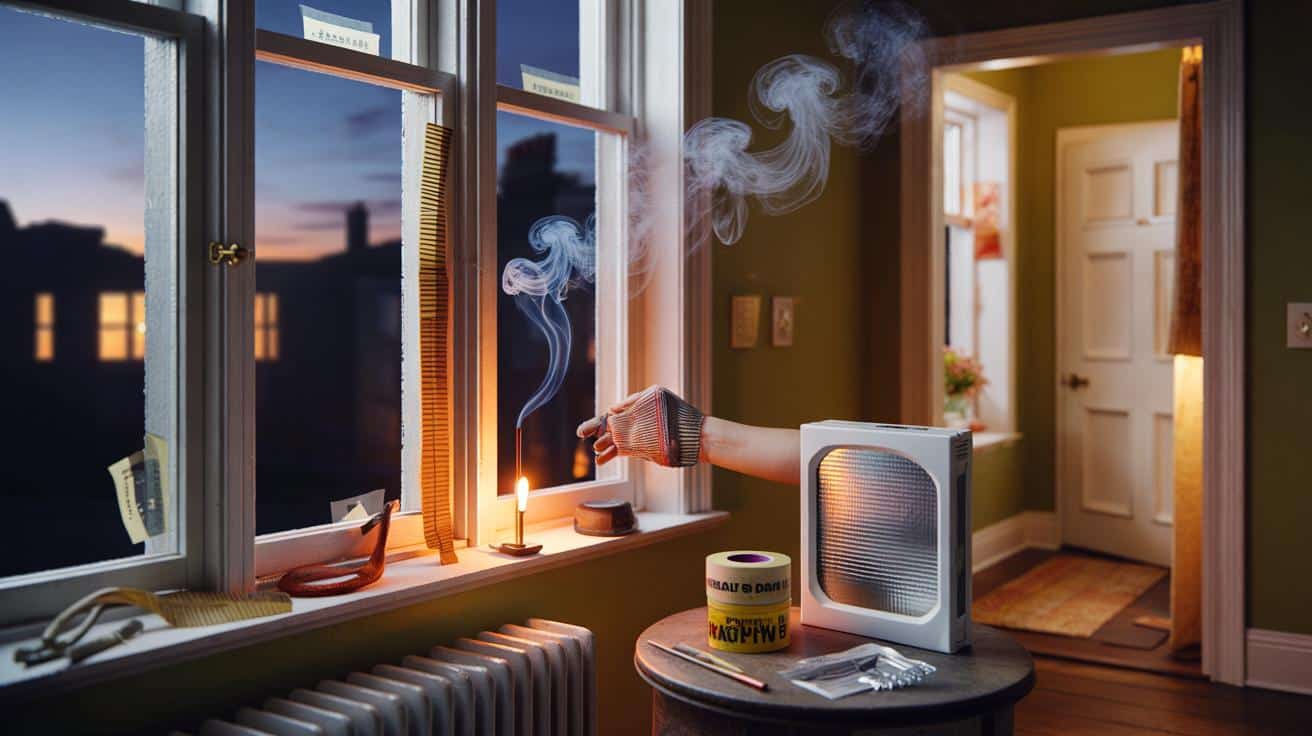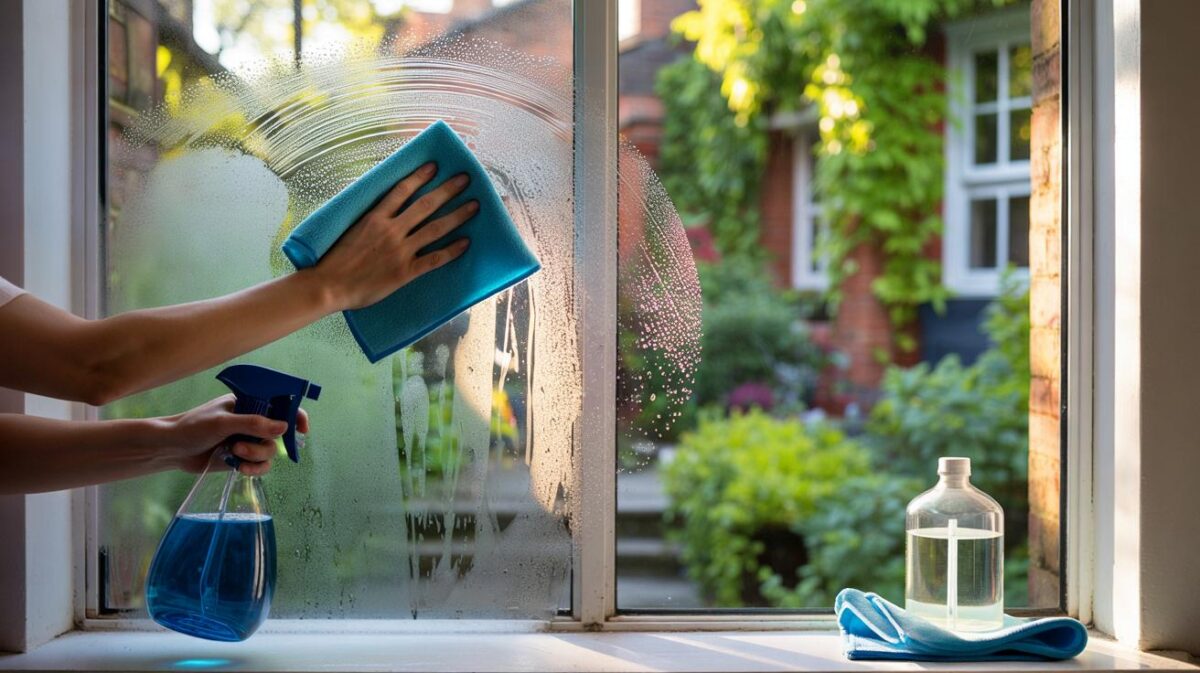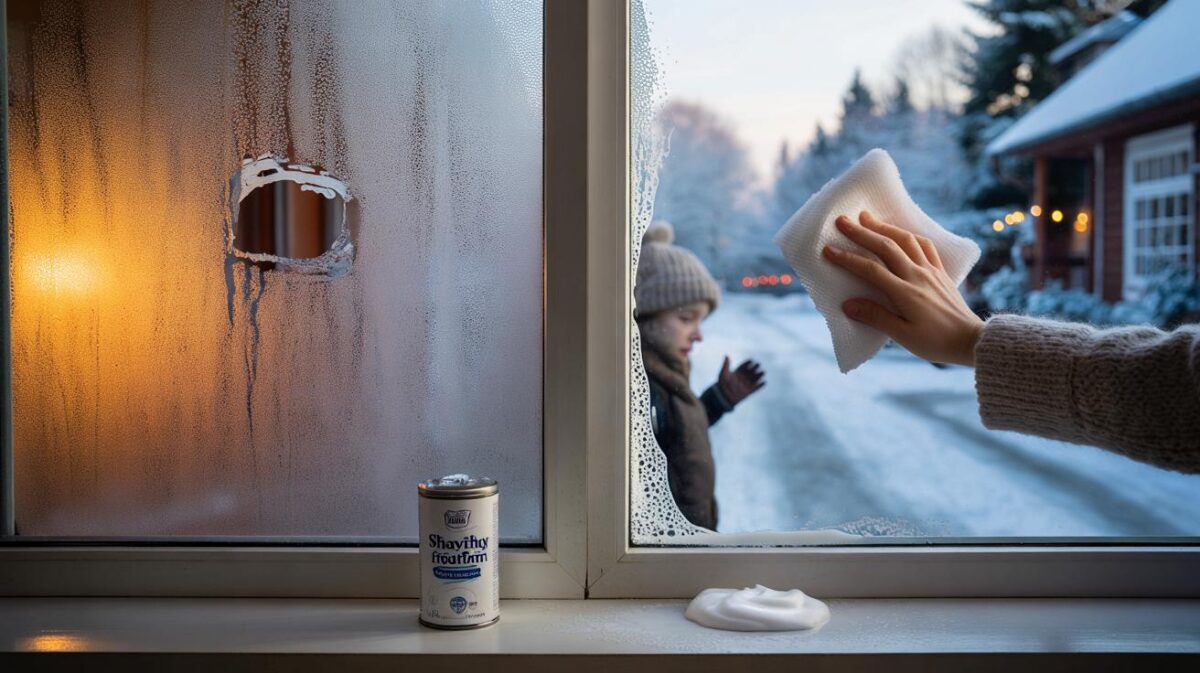Something small is cheating you of warmth and money.
You nudge the thermostat, watch the flame icon glow, and still feel a strand of cold at ankle height. The trick is to stop the invisible escape route before spending a penny on major works.
What really steals your heat
When rooms feel tepid, most people blame walls or lofts. The quiet culprit often sits in the gaps you barely see. A continuous 2 mm slit around a typical window adds up to about 100 cm² of open area. That is a palm-sized hole to the outside, 24 hours a day. Warm air rises, cold air sneaks in low, and your home becomes a gentle chimney.
Your body spots this sooner than your eyes. A wrist-level shiver near a frame. A draught along the skirting. The thermostat then works against a moving target. You pay for heat that never settles.
Block the leaks first. Stop the air from slipping out and every kilowatt-hour you buy does more for comfort.
In Leicester, Amina lives in a 1930s flat with handsome timber frames and cast-iron radiators. She lit a stick of incense and traced the smoke slowly around door bottoms, sockets and window joints. The plume bent sharply at the letterbox and along one sash. She marked the spots with tape, stuck on foam strips, added a brush to the front door, and sealed the letterbox flap. At the same boiler setting, her room temperature rose by roughly 1.5°C and the nip at floor level vanished.
The 30-minute smoke check and quick fix
Give yourself half an hour per room and work methodically.
- Turn the heating off for ten minutes so air currents settle.
- Use incense, a smoking cotton cord, or a very light tissue. Move slowly along window perimeters, door bottoms, sockets and pipe penetrations.
- Where the smoke deflects or the tissue flutters, mark the spot with masking tape.
- Apply targeted draught-proofing: self-adhesive foam on frames, a brush or drop seal under doors, a removable fabric draught snake across larger gaps, and a heat-shrink film on the chilliest panes.
- Slip a reflective panel behind radiators on external walls to lift radiant warmth into the room.
Thirty minutes of careful sealing can raise a room by 1–3°C at the same thermostat setting.
Do not suffocate the building. Keep trickle vents open, and let kitchen and bathroom extractors run their course. Gas appliances need a permanent air supply for safe combustion. Aim for fresh air by design, not by accident through cracks.
Small kit, real savings
You do not need a trades van. A basic kit costs roughly £25–£60: a roll of foam tape, a door brush, a pack of masking tape, two sheets of window film, and a reflective panel for a radiator. Most of it fits in one drawer. You apply it with scissors and a hairdryer.
Where do the savings come from? Fewer leaks mean gentler heat loss, so you can hold the same comfort level with a lower flow temperature or a thermostat set 1°C lower. Many households see a drop in run time for boilers or heat pumps on similar weather days. Over a heating season, that can trim tens of pounds off bills, while the room feels calmer and less “drafty”.
| Action | Time | Typical cost | Expected benefit |
|---|---|---|---|
| Foam sealing around window frames | 10–15 min per window | £4–£8 per window | Cuts whistling joints, reduces cold downdraughts |
| Door brush or drop seal | 15 min per door | £8–£20 | Stops floor-level chills, protects hallways from outdoor air |
| Heat-shrink window film | 10–20 min per pane | £6–£12 per pane | Adds a still air layer, softens “cold glass” effect |
| Reflective panel behind radiator | 10 min | £5–£10 | Pushes more radiant heat back into the room |
| Bleeding radiators | 2–5 min each | £0 with a key | Restores full surface heating, faster warm-up |
Safety and ventilation
Do not cover trickle vents or permanent grilles. Kitchens and bathrooms must breathe to keep moisture in check. Aim for indoor humidity between 40% and 55%. Too dry feels harsh; too humid invites condensation and mould. If you use a gas hob, keep the extractor on and a vent open. Test any carbon monoxide alarms and replace batteries on schedule.
Renter-friendly moves
If you rent, choose reversible fixes: self-adhesive foam seals, removable door brushes, fabric draught snakes, and window films that peel off in spring. Leave anything that needs screws or drilling for a landlord’s approval. Photograph existing gaps before you start and keep receipts; clear documentation helps if a deposit dispute arises.
Why this matters now
Energy prices remain unpredictable, and weather swings can turn a mild week into a sharp cold snap overnight. Many British homes were built before modern airtightness standards. That heritage gives character, but it also means air leakage. Quick draught-proofing tempers the worst of it without touching the bricks.
The cheapest unit of heat is the one you do not lose. Seal first, heat second, and spend less for the same comfort.
How to tune comfort without big spending
Think of your home as zones. Let bedrooms sit cooler at 17–18°C for sleep. Keep the living area at 19–20°C when occupied. Close internal doors to create a warm core. Use thick curtains and close them at dusk; open them when the sun hits the glass to grab free warmth. Avoid blocking radiators with sofas or long curtains, as fabric traps heat before it reaches you.
Build a simple daily rhythm. Five minutes of wide-open windows in the morning flushes stale air quickly with minimal heat penalty. Then shut, latch, and draw curtains. In the evening, run a short humidity check. If the shower or cooking spiked moisture, run extractors on boost for 15–20 minutes. Dry air at the right level feels warmer, so you run the boiler less.
Common questions
- Does window film actually work? Yes on single glazing or tired double glazing. It creates a still air layer that reduces radiant chill from glass. It is barely visible if fitted carefully and comes off cleanly in spring.
- Brush seal or fabric draught snake? Use a brush for a door with a small, even gap and regular use. Choose a fabric snake for bigger or uneven gaps, or for a quick moveable option.
- Can I reduce mechanical ventilation to keep heat? No. Keep designed ventilation running. Control moisture and pollutants through extract fans and trickle vents, and close the random cracks instead.
- What about letterboxes and keyholes? Fit a spring flap and an internal brush for the letterbox. Add a keyhole cover if you feel a clear stream of air through the lock.
- How do I check if it made a difference? Use a cheap digital thermometer and a plug-in energy monitor. Compare room temperature and boiler run time on two similar-weather evenings before and after sealing.
Extra ideas to stretch warmth further
Try a “low and slow” boiler flow temperature on mild days. Many modern boilers run more efficiently at 50–55°C flow instead of 70°C. Combine that with draught-proofing and you may keep comfort steady while the boiler cycles less. If you use a heat pump, draught-proofing helps it hold a gentle, continuous output, which suits how heat pumps deliver comfort.
Consider small floor fixes. A rug on a bare hallway reduces heat you feel being pulled off your feet by cold surfaces. Fit soft gaskets behind leaky electrical faceplates on external walls, taking care to isolate power first. Where pipes penetrate floors or walls, neatly seal the gaps with flexible sealant. Each tiny job trims a pathway for cold air and nudges the whole house towards calm, even warmth.








